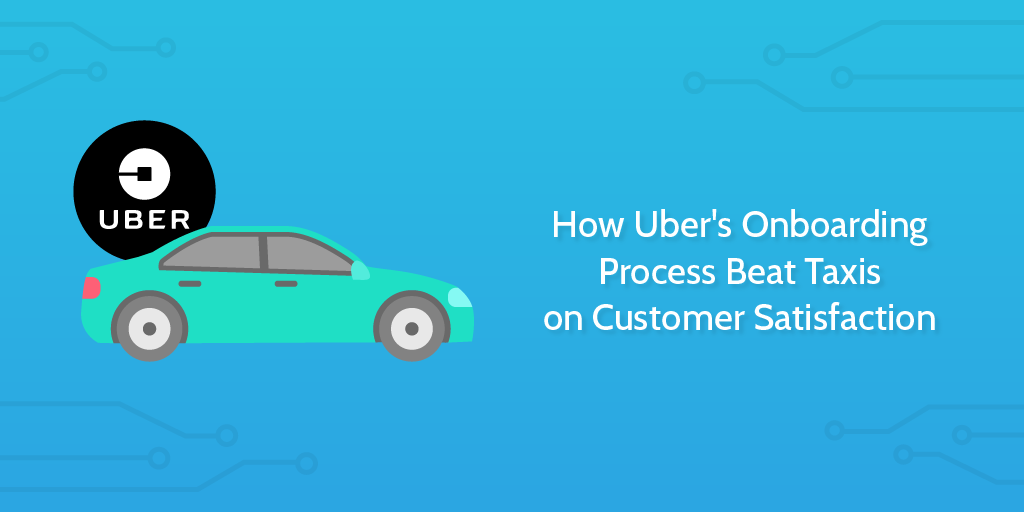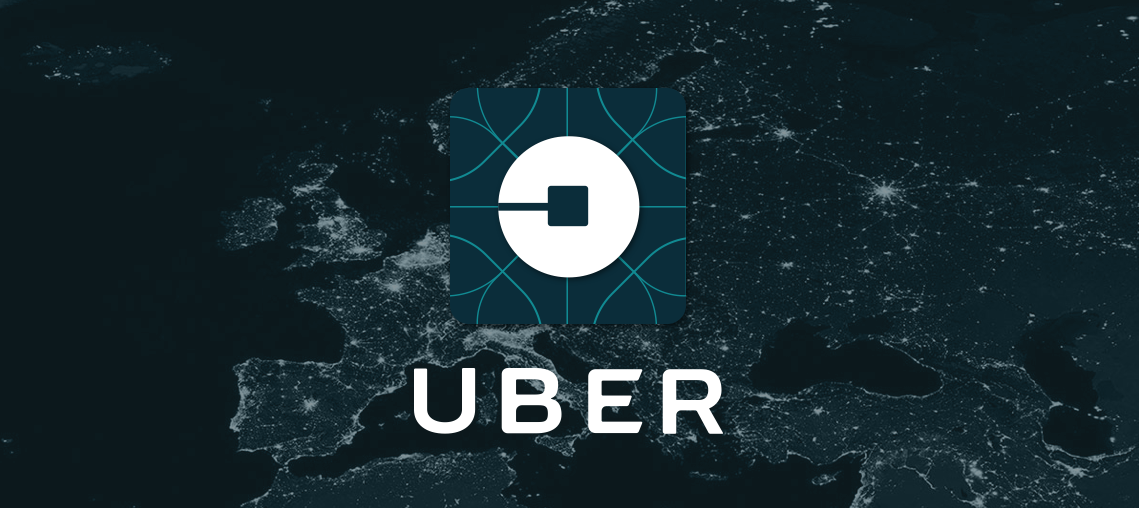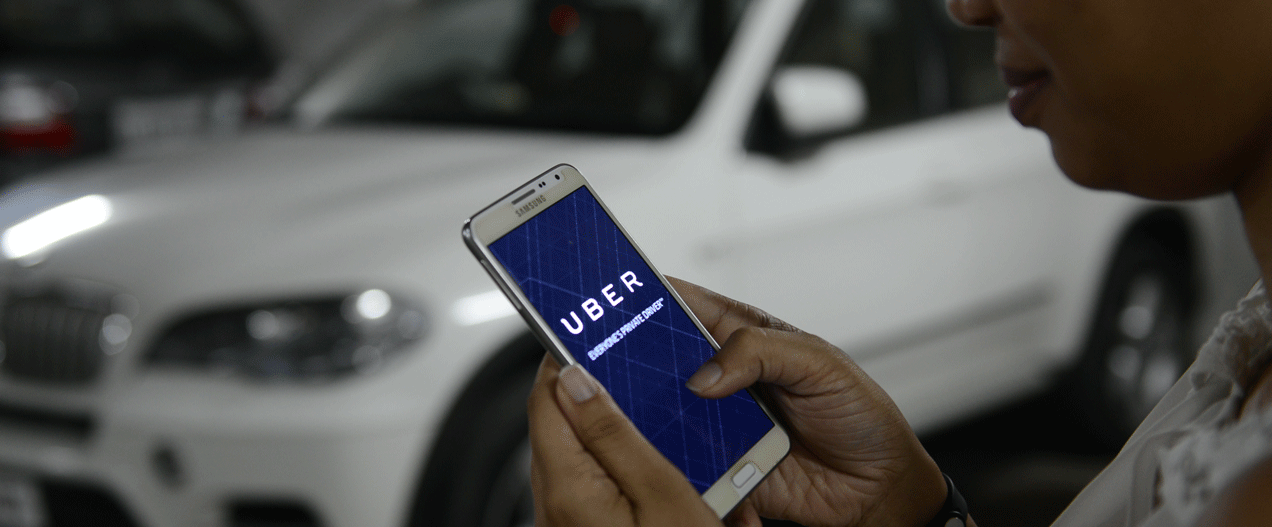 Uber currently has drivers operating in 633 cities worldwide. From nowhere they have stormed the market and disrupted taxi services globally.
Uber currently has drivers operating in 633 cities worldwide. From nowhere they have stormed the market and disrupted taxi services globally.
Uber is one of the biggest successes of the sharing economy.
But what is it about Uber that allows for it to dominate the market?
There is of course the convenience of ordering through the app and all the benefits of the product but, as reported in The Richest, one big plus point is the drivers themselves. Consumers prefer them to taxi drivers.
Partly this is down to having an internal rating system to incentivize drivers to provide high quality services. However, to keep standards high Uber qualifies and onboards drivers to prepare them for their task of protecting the Uber brand.
In this Process Street article we’ll look at how Uber does this. We’ll investigate:
- The importance of effective onboarding
- How Uber enters a new market
- The Uber driver application process
- How Uber onboards new drivers
The importance of effective onboarding

The cost of hiring a new employee in America can be very high.
An employee for a job paying $8 an hour could end up costing +$3,500 in turnover costs, both direct and indirect.
More obvious is the fact that you’re paying your employee to be there. Employees always cost money. Yet, there come other hidden costs too such as extra expense on air-conditioning, coffee, office furniture, insurance, and perks like gym membership or other add-ons which many companies are prone to give:
According to Joe Hadzima, a columnist for the Boston Business Journal and lecturer at MIT’s Sloan School of Management, the salary plus benefits usually totals “in the 1.25 to 1.4 times base salary range.” Hence, the salary plus benefits package for a $50,000/year employee could equal $62,500 to $70,000.
Of course, all of these costs should prove worth it provided the employee performs well.
However, it is still a fair statement to say that employees are a significant expense to a company. Therefore, we should do everything within our power to make sure they are well equipped to do the best possible job they can.
And that starts with the onboarding.
Here’s 5 quick benefits of employee onboarding:
- Better job performance
- Greater commitment to the organization
- Reduced stress
- Higher job satisfaction
- Better retention (and associated cost savings)
But let’s back this up with some data. Some data courtesy of Christine Marino in her text 7 Need-to-Know Facts About Employee Onboarding on HR.com:
- Onboarding programs can increase retention by 25% and improve employee performance by 11%.
- Employees who participate in a structured onboarding program are 69% more likely to stay with an organization for 3 years.
- It takes 8-12 months for new hires to be as proficient as their tenured colleagues.
- 15% of employees said the lack of an effective onboarding program aided in their decision to quit.
Onboarding involves a range of elements but broadly covers 3 key topics: preparation, introduction, and review.
Prepare your hire for the workplace

Different companies approach this in different ways.
At the very least, it is important for new staff to have a solid idea of what their job will be and what daily activities they will get up to. Any responsible new hire will then be able to take the opportunity to prepare themselves for these tasks beforehand.
You can also make sure someone is clear about where they’ll meet you, what documents you’ll need from them, and any information about company culture; dress codes, etc.
These seem like super simple first steps, but giving the new hire all the essentials will help them feel more relaxed on their first day and will kick off their tenure well. First impressions count.
Introduce the new employee to people, concepts, and things
Have you ever started a job where someone sat you down at a computer and gave you tasks to do, but left without introducing you to anyone else in the room?
I have.
Honestly, not a great welcome into the company. It made for a very awkward day.
Introduce your new hire to the people they’ll be working with and other people who they might just see round and about. You don’t want to disrupt everyone’s day, but I’m sure you’re able to find a balance between productivity and community building.
Introduce your new hire to the key concepts which will drive their work. Maybe you need to show them the way you approach agile methodologies? Maybe you need to show them how to use Sharepoint or Confluence? Whatever the information, make sure they have a good hold on it so they’re comfortable with cracking on with their work and doing well.
Lastly, introduce your new hire to anything else they’ll benefit from knowing how to use. Here is a short list of things I typically struggle with when entering a new office space. Things which I feel I could comforatbly figure out, but don’t want to look like Sherlock Holmes in the middle of an open plan office:
- Coffee machine
- Photocopier
- Fax machine [Ed: Do these still exist?]
- Connecting to the WiFi enabled printer
- Can I use just any mug in the cupboard or do I have bring my own?
- The bloody microwave
Review the onboarding with the employee
Once you’ve finished bedding your new hire in, have a meeting with them to find out how they’re adapting.
This can help you do three simple things:
- Show the employee you care about them and their wellbeing in the company.
- Identify any issues they might be having early so they can be tackled.
- Learn from the feedback to improve your onboarding process in future.
How Uber enters a new market in 6 steps

Uber tends to work on the edges of the law.
This tactic of circumventing legal processes is not one I’ll recommend for your business, but throughout the process Uber treats its drivers very well.
Cultivating the driver pool effectively helps Uber develop a strong team in a location ready to compete with local taxis when the moment is right. This commitment shown to the drivers acts as a kind of onboarding stage where Uber demonstrates loyalty knowing it will reap the rewards of that later in both quality and length of service.
Here’s the 6 step process for Uber’s global expansion.
Secretly enter a new market
When Uber identifies a new location to target, they’ll send a team of brand ambassadors to scope out the new hunting ground. These drivers will then quietly try to recruit drivers in order to lay a foundation fleet of cabs which can be activated at any point. Doing this means they can establish a market presence before launching their services, circumventing any legal obstacles to growth.
Ignore threats of legal action
With this on-the-ground network, Uber can launch their services in a location and simply wait for authorities to notice. Typically authorities don’t act straight away and any legal challenge made against Uber’s operations by the local government can be challenged by the company’s well equipped legal team.
Ignore government sting operations
This is where the driver loyalty comes into play. It has happened before where governments look to target drivers in order to push Uber out. These drivers can face hefty fines, yet Uber has in the past stepped up to support their drivers; offering to cover the costs of fines, legal costs, and other damages the driver may end up with. This loyalty keeps the drivers within their network and makes them feel valued.
Start lobbying the state government
Uber makes large efforts to encourage the local governments to legislate in favor of its ride-sharing platform:
This can be done through traditional lobbying avenues – it spent $1.36m on US Federal lobbying in 2016 – within the halls of local governments, but it’s also done on the streets. Through recruiting familiar faces, like Dragon’s Den star W Brett Wilson, to drive an Uber – it creates a buzz around the city. Team this with efforts like giving users a free ride for donating $5 to a local charity, Uber creates a very positive public image and can bring on board the support of influential local charities and other key community stakeholders.
Monopolize the market
Once the practice of ride-sharing has been made acceptable in the city or location Uber is targeting, it comes time for growth. Uber will pump money into this new location through traditional marketing efforts to grow the userbase and onboard more drivers.
Undermine the competition
Uber then seeks to make sure it has the dominant position in the new city it has activated. This has come with some claims that Uber doesn’t always play fair:
According to Lyft, one of the more sneaky business practices Uber has employed is disrupting their competitors’ services. Allegedly, people working for Uber have ordered and canceled over 5,000 rides from Lyft – creating a demand which Lyft struggled to meet, therefore making Lyft appear slower and less reliable to normal users. Uber denies these allegations, of course.
More than this, Uber generates further loyalty by demonstrating how much it values its drivers over its competitors. In some cases Uber have been known to offer as much as $10,000 to drivers from competition companies in order to make the switch to their platform.
The Uber driver application process weeds out bad candidates

But what happens when Uber finds that driver they want to onboard?
Well, there are a couple of different measures Uber employs to vet, prepare, introduce, and review new drivers in its onboarding.
The Uber portal allows anyone to apply
Uber’s online portal makes the process for application to be a driver simple and fast. By automating so much of the hiring process through software Uber is able to have a scalable onboarding system, lowering costs and improving efficiency.
Easy to access, this portal opens up the opportunity to anyone to browse and learn more about the company and whether this step is right for them.
Drivers are educated about Uber before they can submit their application
This learning is not simply an optional thing.
Drivers must go through a process of understanding Uber’s expectations before submitting their application.
This allows drivers to self-select, removing a portion of unsuitable candidates before the process even begins. Moreover, it means that the drivers can prepare themselves better for further rounds of the selection process and will have a solid understanding of the role before their first day.
The portal passes good candidates on for an interview
Through the Uber portal, all essential documents are submitted along with the application and personal elements. Uber’s system then weeds out the candidates who shouldn’t qualify and passes potentially suitable candidates on for an interview.
At this point, we bring human interaction into the process. Given that one of the areas Uber wish to deliver quality is ride experience, it follows that drivers should come across as personable and prepared to delivery high quality service.
This interview acts as a final vetting stage and as a way to put a human face on the company and welcome a new driver aboard.
Uber encourages drivers to be passionate and learn from ‘colleagues’
As part of the efforts to help drivers understand how to perform well, Uber facilitates initiatives like peer learning and community building. More than this, Uber includes other perks and assistance to help drivers achieve in other areas of life:
For example, we’re creating a scholarship program with South Seattle Community College for partners who are interested in expanding their education. Over the past 2 years, we’ve contributed more than $75K in scholarship funding for our local partners and their family members.
These perks can help drivers feel valued and show Uber’s recognition that they may want to pursue other things alongside, or instead of, their driving in future. This presents the company as seeing its drivers as people – an obvious but important sentiment to communicate.
On top of this, drivers are encouraged to engage in community building of their own. As reported in Fast Company, drivers are banding together to help each other overcome the obstacles they may face while working in the ride-share community. The negatives presented to Uber by this movement – driver resistance to new policies – comes secondary to positive elements like driver feedback, improved standards, and a feeling of unity amongst these emerging networks.
Uber champions its best drivers publicly
Finally, Uber celebrates its drivers publicly, not just on official channels but also by buying long form ads and presenting their drivers to the world.
“A compliment can go further than you think,” says onscreen copy at the beginning of the spots, which were made by agency Giant Spoon, before delving into the drivers’ life stories. The theme is “Going Beyond 5 Stars,” a reference to the highest score a passenger can give a driver within the app’s rating system.
These steps help boost best practice and tie human resource-esque actions in with strategic plans for improved services.
How Uber onboards new drivers

We can see here that Uber uses a series of techniques in order to effectively onboard drivers.
The primary items I want to draw attention to are:
- Shielding new drivers in new locations from the law
- Requiring new drivers understand exactly what is expected of them before they apply
- Championing Uber drivers in public
- Encouraging peer learning and community building
Why have I chosen these?
Well, these are all best practice examples of things every business should be doing – whether as part of the onboarding of new employees or even new customers. The goals behind each of these actions are applicable across different industries:
- Demonstrate loyalty to your employees
- Educate potential and new employees to give them the best possible understanding of expectations
- Make your employees feel valued by celebrating their achievements and those of their peers
- Encourage knowledge sharing and community within your company to create environments which raise standards
Now, you might say that not all of these are about onboarding. But I would contest that.
When someone joins a new company, they are in a very malleable position where they can quickly develop enthusiasm, excitement, and passion for their new role. The onboarding process sets the tone for what follows.
Solid education of the company, its services, and its values along with peer learning systems in place will bring a new hire up to speed quickly and effectively alongside their regular tasks. These elements are supplementary to their direct management by a superior.
Your employees can drive your company forward

Uber’s effective onboarding of drivers stems from a recognition that the driver is a key company asset.
Having more engaged and passionate drivers than local taxi firms has given Uber a distinct advantage in the market, and other companies recognize this and have attempted to challenge Uber on this.
The Rideshare Guy, however, still believes that Uber is better for drivers than Lyft.
That said, Uber’s ability to make drivers passionate and increase customer success in the process could well be short lived if it doesn’t start showing real financial rewards to its drivers.
According to a study from MIT:
[T]he median pretax profit was $3.37. 74% of drivers were taking home less than their state’s minimum wage, and 30% of drivers were losing money for every mile they drove. The median driver generated $0.59 per mile driven, with a typical per-mile cost of $0.30.
Though Uber’s onboarding process works brilliantly, its business model could serve to undermine its successes in the medium term… (until it automates everything and bins drivers off forever…)
6 employee onboarding checklists to smooth your hiring
While you’re here, you may as well check out these 6 free premade employee onboarding Process Street templates for onboarding different kinds of staff.
Simply add them to your Process Street account to begin editing and tweaking the checklists for your needs!
- General Employee Onboarding Checklist
- Call Center Employee Onboarding Checklist
- Retail Employee Onboarding Checklist
- Restaurant Employee Onboarding Checklist
- Developer Onboarding Checklist for Startups
- Salesperson Onboarding Checklist for Startups
How do you construct your onboarding processes? Let us know in the comments below!







 Workflows
Workflows Projects
Projects Data Sets
Data Sets Forms
Forms Pages
Pages Automations
Automations Analytics
Analytics Apps
Apps Integrations
Integrations
 Property management
Property management
 Human resources
Human resources
 Customer management
Customer management
 Information technology
Information technology



Adam Henshall
I manage the content for Process Street and dabble in other projects inc language exchange app Idyoma on the side. Living in Sevilla in the south of Spain, my current hobby is learning Spanish! @adam_h_h on Twitter. Subscribe to my email newsletter here on Substack: Trust The Process. Or come join the conversation on Reddit at r/ProcessManagement.